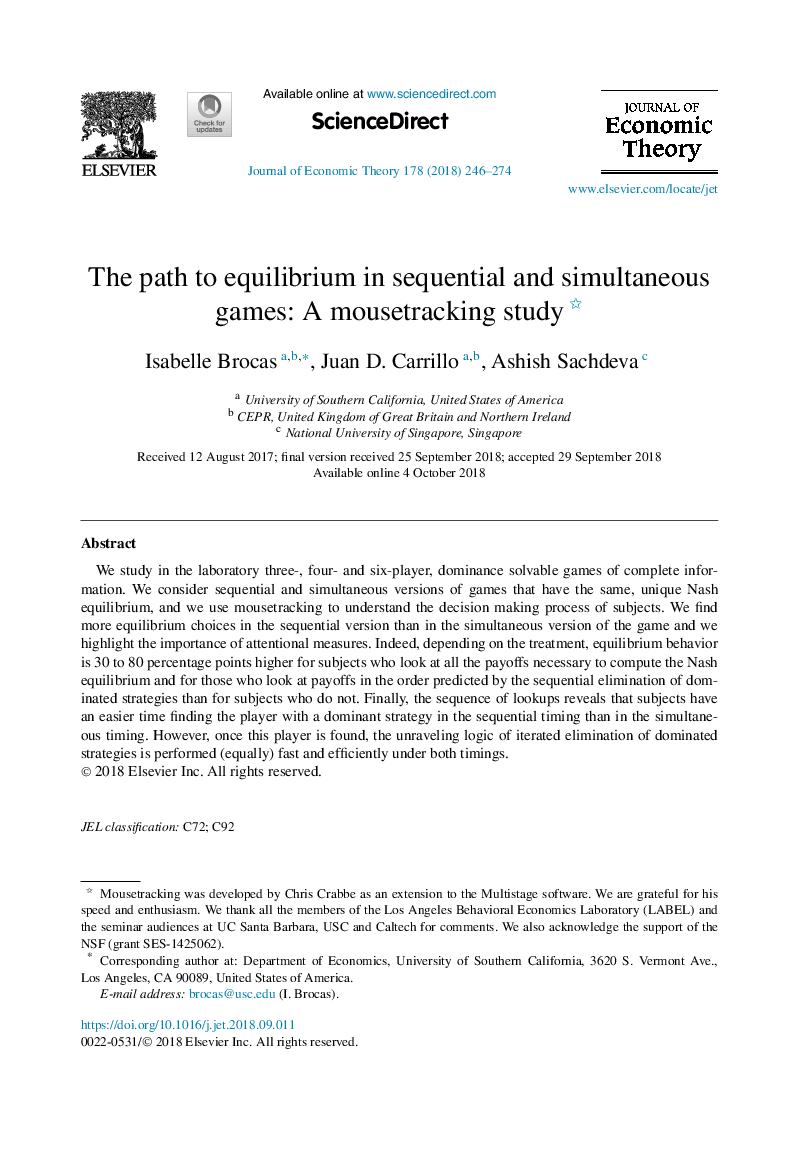| Article ID | Journal | Published Year | Pages | File Type |
|---|---|---|---|---|
| 11032303 | Journal of Economic Theory | 2018 | 29 Pages |
Abstract
We study in the laboratory three-, four- and six-player, dominance solvable games of complete information. We consider sequential and simultaneous versions of games that have the same, unique Nash equilibrium, and we use mousetracking to understand the decision making process of subjects. We find more equilibrium choices in the sequential version than in the simultaneous version of the game and we highlight the importance of attentional measures. Indeed, depending on the treatment, equilibrium behavior is 30 to 80 percentage points higher for subjects who look at all the payoffs necessary to compute the Nash equilibrium and for those who look at payoffs in the order predicted by the sequential elimination of dominated strategies than for subjects who do not. Finally, the sequence of lookups reveals that subjects have an easier time finding the player with a dominant strategy in the sequential timing than in the simultaneous timing. However, once this player is found, the unraveling logic of iterated elimination of dominated strategies is performed (equally) fast and efficiently under both timings.
Related Topics
Social Sciences and Humanities
Economics, Econometrics and Finance
Economics and Econometrics
Authors
Isabelle Brocas, Juan D. Carrillo, Ashish Sachdeva,
